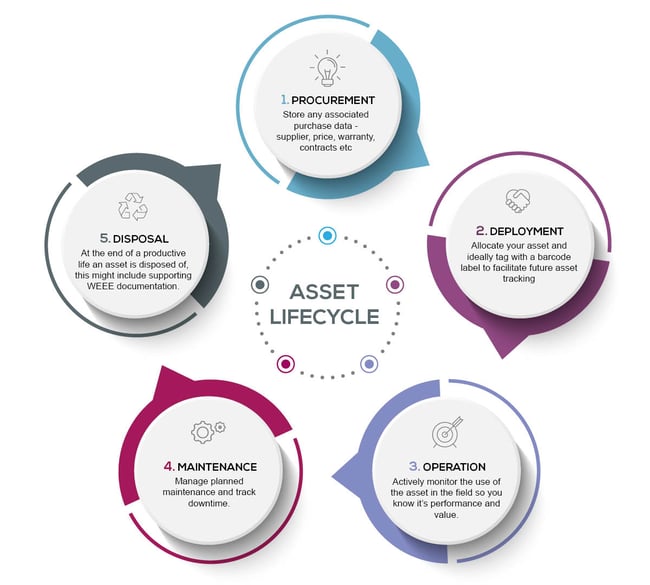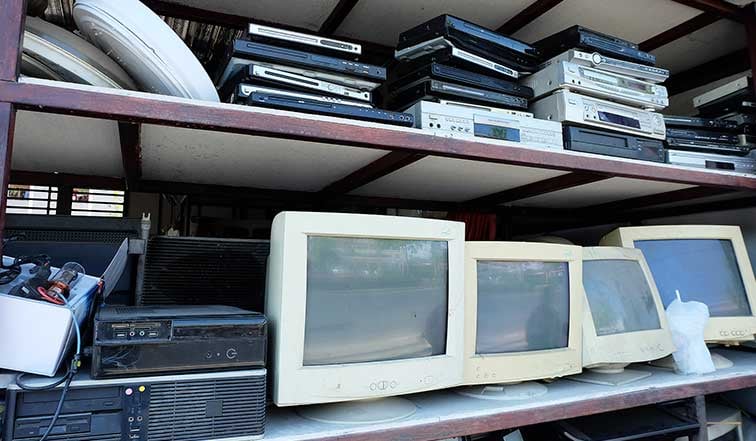Asset Management: The Asset Life Cycle Stages

Assets are your schools building blocks; knowing what they are, where they are and their condition will help in planning and getting the most out of school resources. Asset life cycle management differs depending on the type of asset, amount of preventative maintenance it needs, the conditions it endures, as well as its complexity and the length of its service.
Asset tracking monitors each phase of an asset’s life cycle. By gathering data you can estimate efficiency, reliability, predict an asset’s length of service and the need to replace.
Pro-active lifecycle management will involve:
- including the asset in the budget
- Identifying the requirement for the asset and researching best matches
- integrating the item into an asset tracking system
- scanning the item for regular tracing and information
- checking for depreciation
- seeking and installing software updates
- initiating preventative maintenance
- ensuring compliance where the asset’s operation falls under Health and Safety regulations
An asset's life cycle can be broken down into distinct stages, from its initial purchase to eventual disposal. Some models identify four stages, some six but most people work with the five-stage model which we will explore below.
Stage 1 - Procurement
Our lifecycle starts here, and depending on its complexity may need to be backed with careful thought and research. Before investing, a school will be thinking about what it needs from the asset and for how long. This will help establish a clear brief and budget to find a suitable supplier and negotiate the right deal. In some cases, the acquisition might include a leasing agreement, an SLA or upgrade path, which a school must understand and manage over the asset lifetime. This, and other basic asset information such as cost, depreciation, purchase order, make and model, serial number etc. should be recorded into the asset management system along with a unique asset code.
Stage 2 - Deployment
This is the stage where an asset might need to be assembled, installed, checked or supporting training organised before being allocated. At this point you need to physically tag the asset, using a scannable barcode or QR code to assist asset tracking going forward.
Stage 3 - Operation
Operation is obviously the longest stage of the asset life cycle (or at least should be), when the asset is put to good use in your school or trust. The performance of an asset is continuously monitored for upgrades, performance, compliance, ownership and location. Keeping the asset in this phase of its productive life for the maximum amount of time, depending what the asset, will involve:
- Immediate attention to emergency repairs
- Regular asset scanning
- Ensuring employees are appropriately trained to use
- Proper cleaning procedures
- Preventative maintenance according to manufacturer’s suggestions
- Avoiding overwork
- Remaining in regulatory compliance
- Software updating and installation
Stage 4 - Maintenance
Asset maintenance refers to regularly scheduled preventative maintenance, as well as emergency downtime or temporary removal from the work cycle for upgrading. With careful planning, a detailed asset history and proper use, asset maintenance should not come as a surprise for your school. Even if an asset has surpassed its expected lifecycle, it might remain in service—as long as it’s still operating safely and correctly.

Stage 5 - Disposal
And finally, when the asset is no longer useful to the school, it is removed from service and either sold, re-purposed, thrown away or recycled. You shouldn’t delete an asset from the inventory but change its status. Depending on the asset, there may be a regulatory disposal process which will minimise harm to the environment. If you have an IT asset which holds personal contact data, there will also be a regulatory guidance on wiping /destroying any personal information. This is an area where you will need an audit trail recorded in the School Asset Management software
Conclusion
By proactively managing and tracking the lifecycle stages a school can make the most out of its investment from start to finish. Whether an asset is recycled, sold, or scrapped at the end of its lifecycle, you can be confident it will have served its purpose as efficiently as possible.
Check out our 5D Asset Management Software on the link below
About Lisa Robinson
Lisa - word smith to the gods.
Tags: Asset Management

